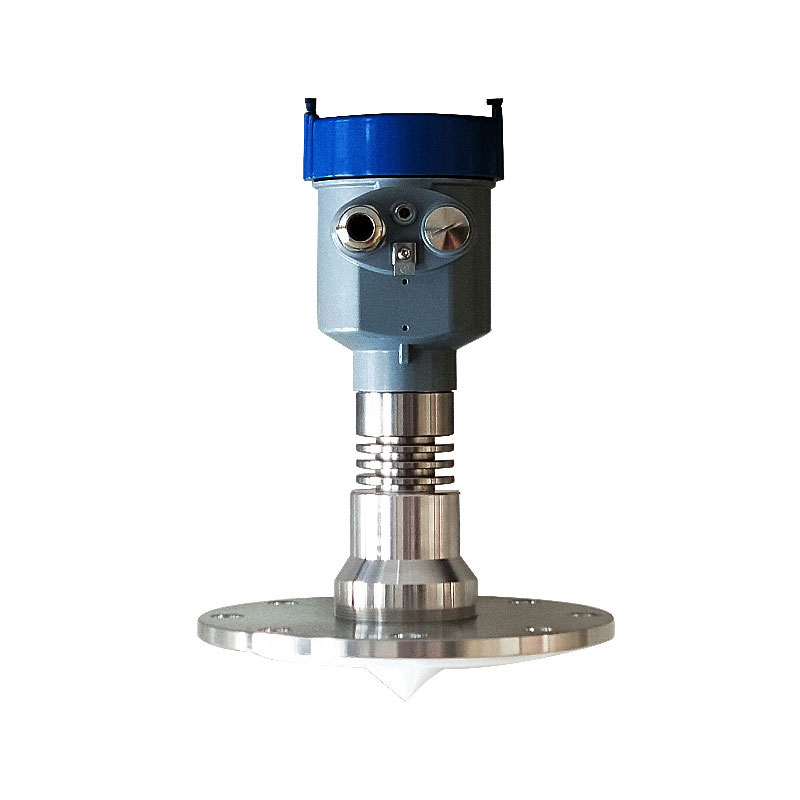Tianqiong Sensor IOT Technology Co., Ltd
Sales Manager:Ms. Emily Wang
Cel,Whatsapp,Wechat:+86 15898932201
Email:info@fengtutec.com
Add:No. 155 Optoelectronic Industry Accelerator, Gaoxin District, Weifang, Shandong, China

Sales Manager:Ms. Emily Wang
Cel,Whatsapp,Wechat:+86 15898932201
Email:info@fengtutec.com
Add:No. 155 Optoelectronic Industry Accelerator, Gaoxin District, Weifang, Shandong, China

Model:YW-26B
Brand:tianqiong
1.Corrosive liquid level sensor product principle
Corrosive liquid level sensor is used to monitor water level, oil level and other mildly corrosive liquid levels, providing continuous level measurement for corrosive and non-corrosive liquids.The radar level antenna emits narrower microwave pulses and transmits them downwards through the antenna. After contacting the surface of the medium to be tested, the microwave is reflected back and received by the antenna system again. The signal is transmitted to the electronic circuit part and automatically converted into a level signal (because the microwave propagation speed is extremely fast, the time it takes for the electromagnetic wave to reach the target and return to the receiver through reflection is almost instantaneous).
2.Corrosive liquid level sensor technical parameters
Product Features: Tetrafluoroconical antenna
Typical applications: liquids, powders, high sanitary levels, easy crystallization, condensation, easy adhesion of oil smoke and dust, etc.
Measuring range: 30 meters
Antenna material: PTFE (optional)
Accuracy: ±5mm
Process temperature: -40~260℃
Process pressure: -0.1~4.0Mpa
Power supply: 24vDC (two wires, four wires)
Signal output: 4~20mA/Har (two wires/four wires)
RS485/Modbus
Process connection: flange (≥DN50 optional)
Protection level: IP67
Frequency range: 26GHz
Protection level: IP67
Explosion-proof grade: ExiaⅡC T6 Ga/Exd ia IIC T6 Gb
On-site display: LED (standard)
Cable entrance: M20*1.5, ½NPT (optional)
Housing material: cast aluminum, 304 stainless steel (optional)
3. Corrosive liquid level sensor product features
The antenna is small in size and is easy to install; non-contact radar, no wear and pollution.
Almost not affected by corrosion and foam; almost not affected by changes in water vapor, temperature and pressure in the atmosphere.
Severe dust environments have little impact on the high-frequency level gauge operation.
Shorter wavelengths and better reflect on slanted solid surfaces.
The beam angle is small and the energy is concentrated, which enhances the echo capability while also helps avoid interference.
The measurement blind spot is smaller, and it will also achieve good results for small tank measurements.
High signal-to-noise ratio allows better performance even in fluctuations.
High frequency is the best choice for measuring solid and low dielectric constant.
The Atmospheric Visibility Sensor is a device that accurately acquires atmospheric visibility data.The working principle of the Atmospheric Visibility Sensor is based on the theory of light scattering. The instrument is equipped with a light source of a specific wavelength, mostly an infrared LED li...
The construction of smart wetlands takes wetland monitoring equipment as the core, and combines Internet of Things (IoT), big data, and artificial intelligence technologies to build a three-dimensional monitoring network covering hydrology, meteorology, and ecology.The wetland weather stations...
Micrometeorology refers to the small-scale climatic characteristics formed in the near-surface atmosphere and upper soil due to the specific structural features of the underlying surface. These characteristics may be reflected in individual meteorological values, or in specific weather phenomena suc...
Climate change is leading to more frequent and intense extreme weather events (such as droughts, floods, heatwaves, and late spring cold snaps). These weather events cause devastating impacts on agricultural production. Traditional, experience-dependent farming models struggle to cope with this unce...